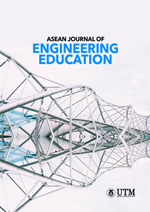Implementing an Integrated First-Year Engineering Curriculum with Mixed Teaching Approaches
DOI:
https://doi.org/10.11113/ajee2020.4n1.13Keywords:
Engineering first-year curriculum, project-based learning, experiential learning, curriculum evaluationAbstract
Griffith University offers Engineering programmes over two campuses in South East Queensland, Australia. A large proportion of students are the first in their families to attend university, with many from low socio-economic backgrounds. In 2017, Griffith moved to a trimester system, and the School of Engineering and Built Environment restructured the first-year engineering curriculum to provide an improved engineering experience focusing on key educational outcomes for its diverse student population.
This article describes and evaluates the new integrated first-year curriculum, which includes a mix of traditionally taught, partially experiential, and fully experiential courses. The curriculum structure is discussed, and the outcomes evaluated in terms of student achievement, progression, and satisfaction. Findings of this evaluation indicate that teaching staff have a crucial role in ensuring courses are well received, traditionally taught mathematics courses do not appear to be meeting the needs of the students, and that ‘C’ is unlikely to be a good choice for a first programming language for engineering students. However, the restructuring shows some preliminary success in terms of increased retention when coupled with proactive outreach. Further research into student perceptions and performance across courses with different teaching approaches is recommended.


















